This Content Is Only For Paid Subscribers
In Part Two, Melissa Fisher delves into the dynamic shifts within the modern workplace, urging decision-makers to prioritize employee well-being and foster inclusivity.
Melissa also highlights the profound impact of societal movements on corporate responses, emphasizing the crucial role of physical office spaces in fostering innovation and meaningful connections. The discussion extends to the futuristic realm of the Metaverse and the imperative for upskilling, underlining the significance of aligning human behavior insights with innovative workspace design. By exploring the intersection of social science and design, the transcript encourages decision-makers to navigate the evolving landscape of work with a keen understanding of both technological advancements and human dynamics.
Transcript
The workplace shapes human behavior. the humans reshape workplace. And we are now in a moment in which we’re not just human, we’re sort of half human. We’re like cyborgs, right?
Human Centered Environments (1:09)
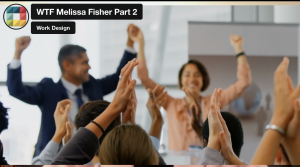 We’re having a lot of conversations that were sort of shoved under the rug. I think that people are personally having these conversations amongst family or close friends. However, as these become more public conversations, take for example social movements like Me Too and Black Lives Matter, and concerns about racial and gender discrimination, I think that given this kind of broader conversation on multiple levels, that employers do need to think about their employees perhaps more than they did before. They need to create what we call a human-centered, more diverse, equitable, socially just work environment. At the same time, one cannot just give the work on a platter. ‘Here’s everything that you want’. If you think or you have the mindset of, if I attract the best talent and I give them the best amenities, and I’m not just talking necessarily yoga rooms, but access to work, family, more kind of balance or things, then people will, as some have argued, bring their best selves to work.
We’re having a lot of conversations that were sort of shoved under the rug. I think that people are personally having these conversations amongst family or close friends. However, as these become more public conversations, take for example social movements like Me Too and Black Lives Matter, and concerns about racial and gender discrimination, I think that given this kind of broader conversation on multiple levels, that employers do need to think about their employees perhaps more than they did before. They need to create what we call a human-centered, more diverse, equitable, socially just work environment. At the same time, one cannot just give the work on a platter. ‘Here’s everything that you want’. If you think or you have the mindset of, if I attract the best talent and I give them the best amenities, and I’m not just talking necessarily yoga rooms, but access to work, family, more kind of balance or things, then people will, as some have argued, bring their best selves to work.
If you bring your best self to work and you’re not as anxious or depressed, then you’re going to work much better and more productively and contribute to the bottom line. That might not be as easy for us to measure in metrics immediately, but I think that in terms of an investment in people in relation to business, is where I would argue work organizations should be looking at prioritizing people. Anthropologists look laterally. You don’t just look at tech. You don’t just look at people. It’s how do these things interact? People are using technology. People are involved in the environment. You have to think about a more holistic kind of eco cultural system and that makes it harder to look at the priorities, but it also looks at how do these different pieces, technology, cost value, how can I best have them work effectively together, and the people are a part of and make up that system together?
The Real System (3:24)
 It should be an inclusive process, including people who are working but also those who are thinking at it. There’s a tendency to look, but you can’t look at the individual level and you can’t just look at the workplace level. You need to think as it being interactive. The workplace shapes human behavior. The humans reshape workplace and we are now in a moment in which we’re not just human, we’re sort of half human. We’re like cyborgs! We now have to think about that and we need to think about workplaces as systems or structures. And yes, that’s a very holistic way of looking at it and then how are the different pieces working together? What social scientists bring to the table is an ability to map out the system, how it’s working formally and informally, because very often you have a formal organizational chart about how things should work and who is leading what and who has a job. But if you look, there’s always an informal social structure like who’s doing the work, who’s not, who’s mentoring, who has allies and things like that and that’s part of the system. That is the system and how it actually works. That’s what anthropologists have been able to look at – what’s really going on?
It should be an inclusive process, including people who are working but also those who are thinking at it. There’s a tendency to look, but you can’t look at the individual level and you can’t just look at the workplace level. You need to think as it being interactive. The workplace shapes human behavior. The humans reshape workplace and we are now in a moment in which we’re not just human, we’re sort of half human. We’re like cyborgs! We now have to think about that and we need to think about workplaces as systems or structures. And yes, that’s a very holistic way of looking at it and then how are the different pieces working together? What social scientists bring to the table is an ability to map out the system, how it’s working formally and informally, because very often you have a formal organizational chart about how things should work and who is leading what and who has a job. But if you look, there’s always an informal social structure like who’s doing the work, who’s not, who’s mentoring, who has allies and things like that and that’s part of the system. That is the system and how it actually works. That’s what anthropologists have been able to look at – what’s really going on?
Social Justice (4:49)
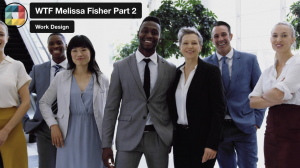 I think it’s really interesting to see the impact of social movements and how they’re incorporated or shape the workplace. We had Me Too, several years back, the George Floyd murder and the Rise of Black Lives Matter and I think at this point, that corporations far more in the last five to 10 years, have really had to be much more responsive to social and political unrest. I went to a diversity equity inclusion conference back in December, and I was floored at the topics because they were not topics that were discussed amongst diversity, equity, and inclusion professionals at workshops or conferences that I attended 10 years ago. The opening conference panel was on social and political unrest. The next one was about migration and immigration. There were a number of them about racial inequality and so on and so forth. Therefore, I think that all of these movements, not just Black Lives Matter, but a sort of attention to diversity, different kinds of gender and sexual identities, real acknowledgement of queer being queer and queer workplaces. There’s so much that is impacting the workplace, especially as we get into Gen Z who care about social justice and climate justice. You do see corporations being responsive. My optimism is always kind of measured. I’m pretty optimistic as a social scientist and as a person, but with some healthy dose of, let’s see. These are very complicated sets of issues.
I think it’s really interesting to see the impact of social movements and how they’re incorporated or shape the workplace. We had Me Too, several years back, the George Floyd murder and the Rise of Black Lives Matter and I think at this point, that corporations far more in the last five to 10 years, have really had to be much more responsive to social and political unrest. I went to a diversity equity inclusion conference back in December, and I was floored at the topics because they were not topics that were discussed amongst diversity, equity, and inclusion professionals at workshops or conferences that I attended 10 years ago. The opening conference panel was on social and political unrest. The next one was about migration and immigration. There were a number of them about racial inequality and so on and so forth. Therefore, I think that all of these movements, not just Black Lives Matter, but a sort of attention to diversity, different kinds of gender and sexual identities, real acknowledgement of queer being queer and queer workplaces. There’s so much that is impacting the workplace, especially as we get into Gen Z who care about social justice and climate justice. You do see corporations being responsive. My optimism is always kind of measured. I’m pretty optimistic as a social scientist and as a person, but with some healthy dose of, let’s see. These are very complicated sets of issues.
Sense-Making (6:34)
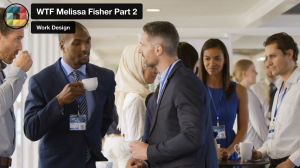 How do people form groups in an office? How do they forge a social and worldview of their being part of a collective entity, which is the symbols and the rituals? And so a purpose of an office is interesting. On the one hand, if you think about how people work, and how people are also involved, whether it’s a trading floor or elsewhere in what anthropologists and others call sense-making, which is gathering incidental information. Hear the guy over in the corner who’s whispering about a deal. You talk to your neighbor. You go out for drinks afterwards and you are absorbing a whole series of sensory information through body language. All these kinds of things that are also infusing how you read the market and how you act in the market. The offices are really important in ways that we don’t think about. Is that socializing? Is that innovation? Yes, it’s part of socializing, and it’s part of innovation, but here is where we really see the importance of being in a physical space, at least some of the time, whether it’s an office or a trading floor. We really need to think about whether or not sense-making can take place in digital form.
How do people form groups in an office? How do they forge a social and worldview of their being part of a collective entity, which is the symbols and the rituals? And so a purpose of an office is interesting. On the one hand, if you think about how people work, and how people are also involved, whether it’s a trading floor or elsewhere in what anthropologists and others call sense-making, which is gathering incidental information. Hear the guy over in the corner who’s whispering about a deal. You talk to your neighbor. You go out for drinks afterwards and you are absorbing a whole series of sensory information through body language. All these kinds of things that are also infusing how you read the market and how you act in the market. The offices are really important in ways that we don’t think about. Is that socializing? Is that innovation? Yes, it’s part of socializing, and it’s part of innovation, but here is where we really see the importance of being in a physical space, at least some of the time, whether it’s an office or a trading floor. We really need to think about whether or not sense-making can take place in digital form.
The Impact of Zoom (7:57)
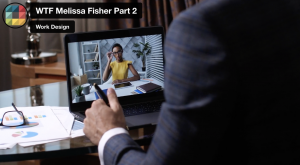 Many people have said to me in interviews that zoom is an equal playing field because you see these equal size boxes and everybody sort of can talk. On the other hand, I have people who have felt like they could not talk. I’ve had a number of women of color talk to me and say, you know what? (women in general) every time I have to get on a Zoom call, my company says I have to bring my best face. This comment was more in the time of total remote work, and I’m exhausted now. All of us would be exhausted, bringing our best faces, but consider how that impacts a particular individual in terms of their gender, race, class, and ethnicity. I love the idea that it’s an equal playing field, and I’m glad that people feel that way on Zoom but I’m not sure that it’s always as equal a playing field as we would like.
Many people have said to me in interviews that zoom is an equal playing field because you see these equal size boxes and everybody sort of can talk. On the other hand, I have people who have felt like they could not talk. I’ve had a number of women of color talk to me and say, you know what? (women in general) every time I have to get on a Zoom call, my company says I have to bring my best face. This comment was more in the time of total remote work, and I’m exhausted now. All of us would be exhausted, bringing our best faces, but consider how that impacts a particular individual in terms of their gender, race, class, and ethnicity. I love the idea that it’s an equal playing field, and I’m glad that people feel that way on Zoom but I’m not sure that it’s always as equal a playing field as we would like.
The Metaverse (8:57)
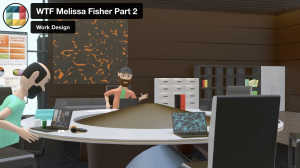 What is the office in the Metaverse? How do people engage with one another? It’s kind of a fascinating moment. I’m very intrigued about the possibilities of entering into the Metaverse. What are the skills and the training that need to be given? These are really things that are happening, and they’re impacting almost every profession, including, for example, human resources who suddenly have to know AI and all these things that 10 years ago would’ve never been part in parcel or very rarely part of their repertoire or how they were being trained. Now we have to really think about upskilling and reskilling. What does it mean for everyone in this moment of sort of working with a copilot? Again, it’s a really interesting moment. On the one hand, you see people very utopic in their ideas that this is going to be the most amazing future in the world, which is what a majority of the people said at the Metaverse and Cities Summit and then you had people who were, ‘hang on’.
What is the office in the Metaverse? How do people engage with one another? It’s kind of a fascinating moment. I’m very intrigued about the possibilities of entering into the Metaverse. What are the skills and the training that need to be given? These are really things that are happening, and they’re impacting almost every profession, including, for example, human resources who suddenly have to know AI and all these things that 10 years ago would’ve never been part in parcel or very rarely part of their repertoire or how they were being trained. Now we have to really think about upskilling and reskilling. What does it mean for everyone in this moment of sort of working with a copilot? Again, it’s a really interesting moment. On the one hand, you see people very utopic in their ideas that this is going to be the most amazing future in the world, which is what a majority of the people said at the Metaverse and Cities Summit and then you had people who were, ‘hang on’.
I’ve seen this a little bit before, this kind of euphoric moment about technology. During the dot.com era, if you remember when everybody was like, ‘this is transforming, nothing will be ever the same. You’ll be on a laptop wherever, a place won’t matter.’ It’s going to be a really interesting time to think about what are the possibilities with AI and the Metaverse. What do we need to be concerned about with these tools because there is so much possibility for good. We need to make sure that it happens.
Thinking Beyond the Workplace (10:40)
 If we can understand behavior in the workplace and how people are behaving, how can we then design the workplace so that people are comfortable? It’s a moving target right now so can we actually, if we’re designing a workplace, a physical environment and a digital environment, let’s see, in a month or two, are people adapting because it’s not just that the work design that you create then shapes the people, but the people will reshape the work environment and redesign it to some extent, within limits. Right now, it would be really interesting to see how they’re doing it, including how are they designing their lives? How are they designing that? You’re not just designing workplaces, you’re designing environments that include the workplace, but are beyond it. Where are people walking to when they’re working? Where are they getting inspired? Maybe there’s artwork somewhere. What is the community that you’re partly designing for? Those are the kinds of things that I think you can bring the sort of social science about how people use the environment and work really closely with designers, not in silos, but together to figure these things out.
If we can understand behavior in the workplace and how people are behaving, how can we then design the workplace so that people are comfortable? It’s a moving target right now so can we actually, if we’re designing a workplace, a physical environment and a digital environment, let’s see, in a month or two, are people adapting because it’s not just that the work design that you create then shapes the people, but the people will reshape the work environment and redesign it to some extent, within limits. Right now, it would be really interesting to see how they’re doing it, including how are they designing their lives? How are they designing that? You’re not just designing workplaces, you’re designing environments that include the workplace, but are beyond it. Where are people walking to when they’re working? Where are they getting inspired? Maybe there’s artwork somewhere. What is the community that you’re partly designing for? Those are the kinds of things that I think you can bring the sort of social science about how people use the environment and work really closely with designers, not in silos, but together to figure these things out.
3 Takeaways:
Cultural anthropology can offer valuable insights into designing more human centric, inclusive, healthy, and sustainable work environments that support the evolving workplace of today. Three dimensions of the profession can be drawn upon to inform workplace strategy and design:
- Ethnographic Methods:
Anthropology, based on ethnographic fieldwork, enables workplace leaders and designers to gain insight into workplace culture and to create a unified sense of it across material and digital locations where work happens. Engaging in ethnography entails listening to employees and short-term participant-observation of how they navigate workspaces.
Most methods applied in workplace research adopt quantitative and non-immersive qualitative techniques drawing primarily on surveys, focus groups, and interviews. The problem is not that these other methods are wrong. Rather they are incomplete without a deep understanding of workplace culture and the socio-economic context in which work, and the workplace is changing, which anthropological tools and approaches can provide. - Workplace Culture: Symbols and Rituals
Anthropologists are experts in understanding workplace culture. They use qualitative findings to discern the underling cultural patterns of symbols, meanings and ritual in the workplace that shape employee’s identities and their workplace experience. Analysis of qualitative data, in conjunction with hard data about workers preferences and habits, can determine how to build and maintain meaningful workplace cultures and experiences. - Broader Socio-Cultural Context
Anthropology can not only help us understand workplace culture. It can also provide deep insight into the broader socio-cultural context in which employees make decisions about going into the office. These include their feeling isolated at home and in need of a physical workplace to not only provide socialization, but a source of professional identity and legitimacy. As workplace leaders collaborate with anthropologists to rethink workplace environments for the needs of today, they can apply anthropological frameworks and approaches to answer questions such as what employees want to come back to work in the office environment for, and how workplace design can foster employees’ sense of belonging.
Resources:
- Melissa Fisher – CFAR
- An Anthropological Approach to Today’s Workplace Design (workdesign.com)
- Global Foresight (swedishcollegium.se)
- Duke University Press – Wall Street Women (dukeupress.edu)
- Duke University Press – Frontiers of Capital (dukeupress.edu)
Meet Melissa Fisher:
 Melissa is a Senior Advisor at CFAR Consulting and Coaching Services. A cultural anthropologist, she has extensive experience studying and consulting on organizations, workplace culture, technology, and the built environment. She takes a human-centric and inclusive approach to designing workspaces and culture, using ethnographic skills to understand and optimize how people navigate working in physical and digital environments.
Melissa is a Senior Advisor at CFAR Consulting and Coaching Services. A cultural anthropologist, she has extensive experience studying and consulting on organizations, workplace culture, technology, and the built environment. She takes a human-centric and inclusive approach to designing workspaces and culture, using ethnographic skills to understand and optimize how people navigate working in physical and digital environments.
Melissa has actively bridged business and academia throughout her career. She has published two books, Frontiers of Capital: Ethnographic Reflections on the New Economy (2006) and Wall Street Women (2012); and played an advisory role on Equity, a 2016 Sony Pictures Classic female financial thriller film. She is working on a book called “Anthropology, Ethnography, and the Global Reimagining of Work,” which explores how workplace experts shape future work environments in the context of pandemics, with a focus on equity and justice. Her work has been featured in publications such as The Washington Post, The Wall Street Journal, CNBC, NPR, and the BBC. She has also delivered hundreds of keynote speeches and talks worldwide.
Melissa is also affiliated with New York University’s Institute for Public Knowledge, New York University’s School of Professional Studies, the Global Foresight Project based out the Swedish Collegium for Advanced Studies, and the Conference Board. She holds a B.A from Barnard College, and a Ph.D. in Anthropology from Columbia University.
Episode 5 Part 2 Credits:
- Created By Bob Fox
- Produced By Work Design Magazine
- Directed By Bob Fox
- Edited By Katie Sargent & Bob Fox
- Special Thanks to Amanda Gram

